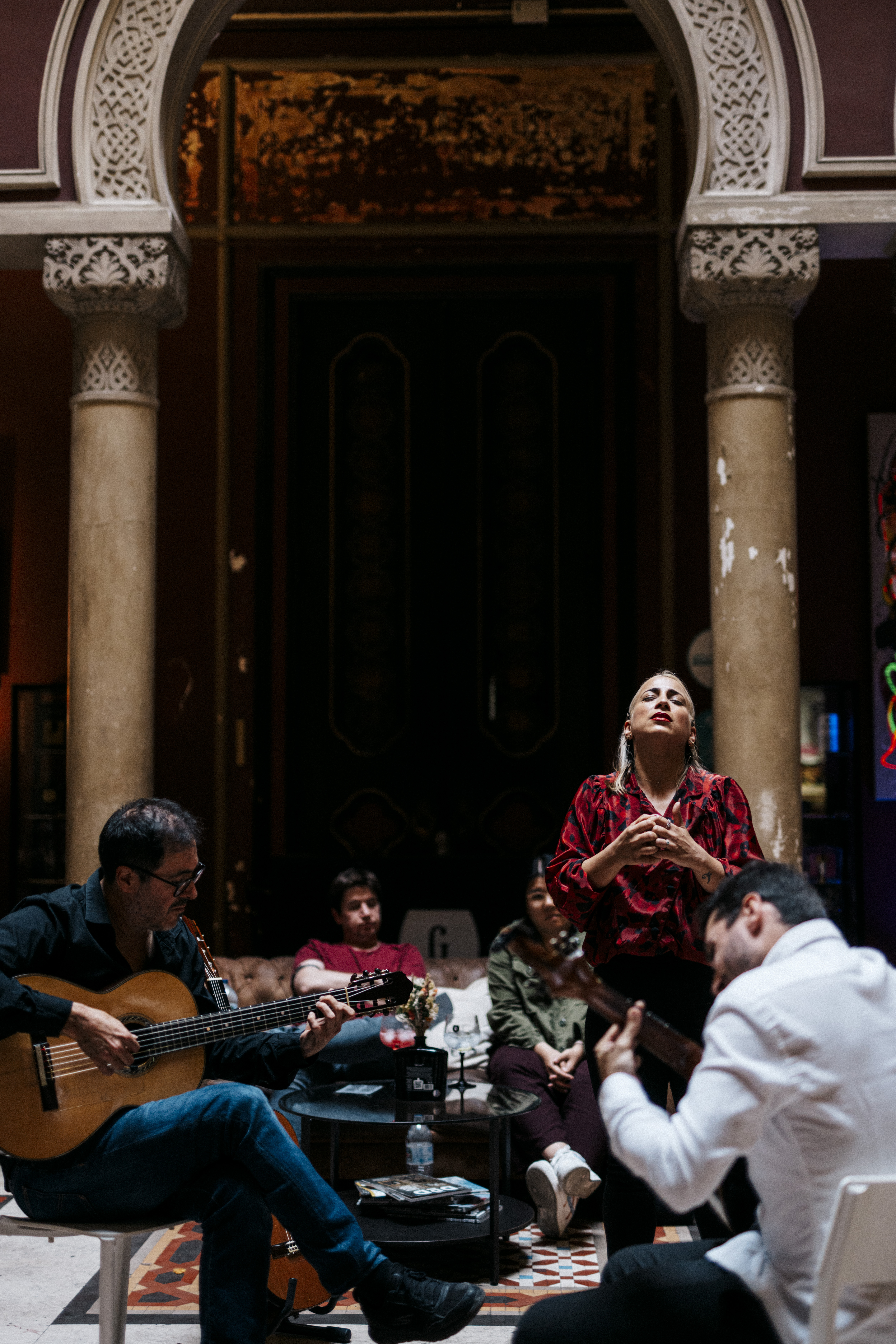The Best of Travel: Portugal
Explore Portugal’s enchanting aspects and hidden secrets, from natural parks to monuments and cuisine. Get curated insights for a journey steeped in culture, history and breathtaking landscapes.
On the west edge of Europe, bordering the Atlantic Ocean stands Portugal, one of the oldest nations in the world. With little over 10 million residents, this deceivingly small country offers a surprising wealth of nature, culture, and history.
The natural parks range from mountain ranges deep inland to quiet reserves along the sea. Indeed, much of the country faces the Atlantic, resulting in an endless string of beaches, many of which are sought out by surfers around the globe. The country’s monuments take you on a journey from prehistory to the modern era, and some even feature colorful azulejo panels, especially around big cities like Lisbon and Porto. Sampling Portuguese cuisine is also a must, whether that’s tucking into a freshly baked pastel de nata, feasting on fresh seafood, or sipping a glass of Port wine. There’s plenty to experience in this little corner of Europe, as you’re about to find out.
1. Take in Portuguese History
Many civilizations have stepped foot in Portugal over the centuries. Among the oldest sites in the country are the Vale do Côa, a prehistoric rock art site in the north, and the Cromeleque dos Almendres, a large megalithic complex in the heart of the Alentejo down south. Roman ruins are also a common sight across the country, ranging from stand-alone monuments like the temple in Évora to entire settlements like Conímbriga, with its stunning mosaic floors. Later, in the medieval era, the country gained a series of castles, many of which are still standing today.
If you’d like to relive Portugal’s early eras, you can join the annual medieval fair in Santa Maria da Feira.
Vinitaa Jayson
The richest period in Portuguese history, however, was the Age of Discovery, when the country expanded its territories and colonized regions in Brazil, Africa, and India. This exploration led to a dramatic exchange of plants, metals, art, and controversially, introduced slave trade to Europe. Thanks to profits from the spice trade, Portugal flourished, and a new architectural style emerged called Manueline, using nautical motifs as a nod to the country’s maritime ventures. Among the most prominent Manueline buildings are the Mosteiro dos Jerónimos and the Torre de Belém in Lisbon, both of which are now World Heritage sites.
One of the best ways to experience the country’s historic buildings is to stay in pousadas, a chain of hotels occupying former castles, palaces, and monasteries.
2. Sample Portuguese Cuisine
Portugal has always been a nation of seafarers. It’s no surprise then that its cuisine is heavily seafood-based. Whether that’s the sardines, freshly grilled on the barbecue every summer, the delicious clams served in a garlicky sauce (that you'll want to mop up with bread), or the unusual-looking barnacles that cling to the rocks of places like Berlengas, a string of islands off the coast of Peniche. Surprisingly, the ubiquitous codfish (bacalhau), which the Portuguese rave so much about, mostly comes from Norway.
Locals say that there are 365 ways of cooking bacalhau, so it has pretty much become a staple in Portuguese cuisine, and for some, it’s the main feature of Christmas dinner.
Three Portuguese Delicacies.

Clams with Garlic
Amêijoas à Bulhão Pato, a traditional Portuguese clam dish, infused with garlic, cilantro, and lemon. [Photo: WikiSleep/Unsplash]

Pastéis de Nata
Freshly baked Pastéis de Nata, the iconic Portuguese custard tarts, with their characteristic caramelized tops. [Photo: Nick Fewings/Unsplash]

Grilled Sardines
Grilled sardines, a staple of Portuguese cuisine, served fresh and simple with a side of salad and potatoes. [Photo: Alex Teixeira/Unsplash]
Of course, there’s much more than seafood here, including hearty stews like the cozido à portuguesa and the meat-layered sandwich drenched in a tomato and beer sauce known as francesinha. And who could forget the delicious pastries that fill the counters of the country’s bakeries and pastelarias (pastry shops)? From the iconic pastel de nata, an egg-custard tart originating in Lisbon, to the travesseiros, a pillow-shaped puff pastry filled with almond, sugar, and cinnamon hailing from Sintra.
3. Tour Portugal’s Parks and Nature Reserves
If you dream of escaping to nature, Portugal has got you covered. The country’s natural wonders are a sight to behold. Whether you’re spotting waterfalls at Peneda-Gerês, the country’s only national park, sledding down the snow-capped mountains of Serra da Estrela, or hiking along the Costa Vicentina, hearing the waves crash beneath you, you’ll want to keep your camera handy. Many species thrive within these preserved sites, from the wild Garrano horse to vultures and herding dogs like the Estrela Mountain Dog.
Joana Taborda
Lesser-known parks include Montesinho, on the northern border with Spain, where remote villages like Rio de Onor still enjoy a rural lifestyle, and the Alvão Natural Park, with its striking riverside trails. Down south is the Parque Natural da Ria Formosa, a nature reserve made up of lagoons and small islets like Ilha da Armona and Ilha da Barreta, where sandy beaches await. Visit between November and March, and you may spot a colony of flamingos chilling by the water. It’s also worth looking out for the passadiços, wooden walkways that cross the country’s forests and wetlands. The Passadiços do Paiva and Passadiços de Alvor are among the most popular. If you head to Paiva (pictured), make sure to walk the 516 Arouca Bridge, one of the world’s largest suspension bridges.
4. Listen to Fado

As you wander through the streets of the Portuguese capital, keep your ears peeled for the sound of fado. This traditional music genre is known for its melancholic tunes and lyrics that express a sense of longing known as saudade.
Typically performed with a singer and a Portuguese guitar, fado has been an Intangible Cultural Heritage since 2011.
You can hear it all over the city, but especially around the historic neighborhoods of Alfama and Mouraria. The best way to experience it is to join a live performance at a traditional fado house. Places like Tasca do Chico, O Corrido and Fado ao Carmo are recommended, but if you’re looking for something out of the ordinary, try Real Fado, which hosts shows in alternative venues across Lisbon.
Another option is to travel to Coimbra, home to the country’s oldest university. While fado in Lisbon is a mournful affair, Coimbra’s fado is sung by students and covers themes connected to the academic lifestyle.
5. Taste Portuguese Wine
Vineyards have been around the Iberian Peninsula for thousands of years, but it was during the Roman occupation that the wine industry really prospered. Today, Portugal is home to 14 official wine regions scattered from north to south. From the lush valleys of the Minho to the terraced vineyards of the Douro Valley and the balmy flatlands of the Alentejo, there is plenty to explore out here.
Vinitaa Jayson
The Douro Valley is the oldest demarcated wine region in the world and, thus, the most famous. Located near the northern city of Porto, it’s where Port wine is produced, a sweet fortified wine often paired with dessert. A bit further up is the region of Minho, which makes vinho verde, a crisp young wine, considered a staple summer drink. However, it’s the Alentejo that makes the majority of Portuguese wine. The region is known for its full-bodied reds, while the whites tend to be mild and slightly acidic. It's also here that you can try the vinho de talha, a wine aged in clay amphorae, just like the Romans did back in the day.
If you want to participate in the traditional grape stomping, you should come in late August or September. Many wineries offer a series of experiences around this time, including picnics and overnight stays in the estates.
6. Admire the Azulejos
Portuguese tiles are a unique art form. You can’t help capturing the colorful azulejo façades adorning the country’s capital and cities like Porto and Aveiro. The first depiction of azulejos in Portugal dates back to the 15th century. Initially, tiles were brought over from Seville, but as the trend caught on, ceramic ateliers began emerging across Portugal.
At the time, tiles were used to adorn churches and palaces as a sign of wealth, but now you’ll see them all over — from train stations (see Estação de São Bento in Porto) to storefronts and resident buildings.
A Collage of Portuguese Azulejos.
Igreja de Santo Ildefonso
The Igreja de Santo Ildefonso in Porto, adorned with traditional azulejo tiles, is a testament to Portugal's religious and artistic heritage. [Photo: Joana Taborda]
Estação São Bento
Estação São Bento, Porto's train station, displays intricate and impressive azulejo murals depicting historical scenes. [Photo: Joana Taborda]
Capela das Almas
The Capela das Almas in Porto, with its striking blue and white azulejo tile facade that tell stories representing the life of Saint Francis of Assisi and Saint Catherine. [Photo: Joana Taborda]
André Saraiva's Mural
André Saraiva's expansive mural at Campo de Santa Clara, composed of over 50,000 tiles, presents a whimsical portrayal of Lisbon's cityscape. [Photo: Joana Taborda]

Wall-full of Azulejos
Fusion of tradition and modernity within a Portuguese restaurant. [Photo: Vinitaa Jayson]
Museu Berardo
An exhibition of Portuguese azulejos at Museu Berardo, Estremoz. [Photo: Joana Taborda]
Some have even turned into contemporary street art displays, like André Saraiva’s mural in Campo de Santa Clara, with more than 50,000 tiles depicting the capital’s cityscape.
To learn more about this traditional Portuguese craft, we recommend visiting the Museu Nacional do Azulejo in east Lisbon. The collection includes a depiction of the capital before the 1755 earthquake ravaged much of the city. You can also learn to paint your own tile in local ateliers like Cerâmica São Vicente (Lisbon) or Gazete Azulejos (Porto).
7. Enjoy the Beach Life
With a coast stretching 500 miles, Portugal has no shortage of beaches. There are many coastal towns around Lisbon which you can reach in an hour or so, from Cascais to Sesimbra. Surfing is also pretty big here, with whole areas dedicated to the sport, like Ericeira or Nazaré, where surfers have hit world records thanks to its giant waves (head to Forte de São Miguel Arcanjo in winter for the best views).
Joana Taborda
The north coast tends to be a bit cooler, while the south is famous for its warmer weather. Many locals flock to the Algarve in the summer alongside British and German tourists. Beyond the busy resort sites like Albufeira and Vilamoura, you’ll also find natural coves like Lagos and even small islets like Ilha da Barreta. For an even quieter getaway, head to the wild coast of the Alentejo.
To complete the Portuguese beach experience, you’ll have to sample a bola de berlim, a doughnut with a sweet custard filling sold by itinerant vendors in the summer.
8. Join a Local Festa
One of the best ways to connect with locals is to join one of the country’s annual festas. These traditional festivals take place all over Portugal, and there’s one for pretty much every month of the year. In June, Lisbon and Porto go into full party mode to celebrate their patron saints: Saint Anthony and Saint John.
We decorate the streets with colorful bunting, throw sardines on the barbecue, and dance the night away to pimba, a Portuguese music style known for its cheeky innuendos (just listen to any Quim Barreiros’ song).
Renan Caraujo
The highlight, however, is the Marchas Populares, a street parade where neighborhoods compete for the title of best dance routine. In Porto, they take it up a notch with fireworks by the river, sky lanterns, and the ubiquitous toy hammers (martelinhos), which locals use to playfully hit passersby. Visit any of these cities during this time, and you’re in for a treat.
Carnival is also widely celebrated across the country. Some towns celebrate it Brazilian-style with flamboyant bikini-like suits like Madeira (the all-year-round spring weather certainly helps), while others cherish old Celtic roots. In the northern village of Podence, for example, young local men roam the streets dressed in colorful-fringed costumes and devilish masks. The efforts to preserve this tradition over the years have made it an Intangible Cultural Heritage.
9. Engage with the Past and Future
Portugal is a country that embraces its past. You’ll see it in the nostalgic fado lyrics, the traditional festivals, and the age-old crafts that still prevail among many villages.
While there’s a deep respect for history, there’s also room for innovation.
Steps in Time: Tradition and Innovation.
Olaria Patalim
An artisan at work in Corval's Olaria Patalim, Alentejo, shaping clay. [Photo: Joana Taborda]
MAAT
The MAAT (Museum of Art, Architecture, and Technology) in Lisbon, swooping elegantly over the riverside. [Photo: Joana Taborda]
Loja da Burel
The workings of a loom in Loja da Burel, Lisbon, showcasing the timeless craft of Portuguese weaving. [Photo: Joana Taborda]
Over the last decade, many young creatives have reimagined these cultural traits, from Fado Bicha (a queer fado duo) to Portugal Manual (a network of young Portuguese artisans). At the same time, the country has become a haven for entrepreneurs, welcoming events like Web Summit and setting up technology centers like the Hub Criativo do Beato.
This incredible juxtaposition has made Portugal a magnet for creatives and travelers looking to experience a new culture. ||

